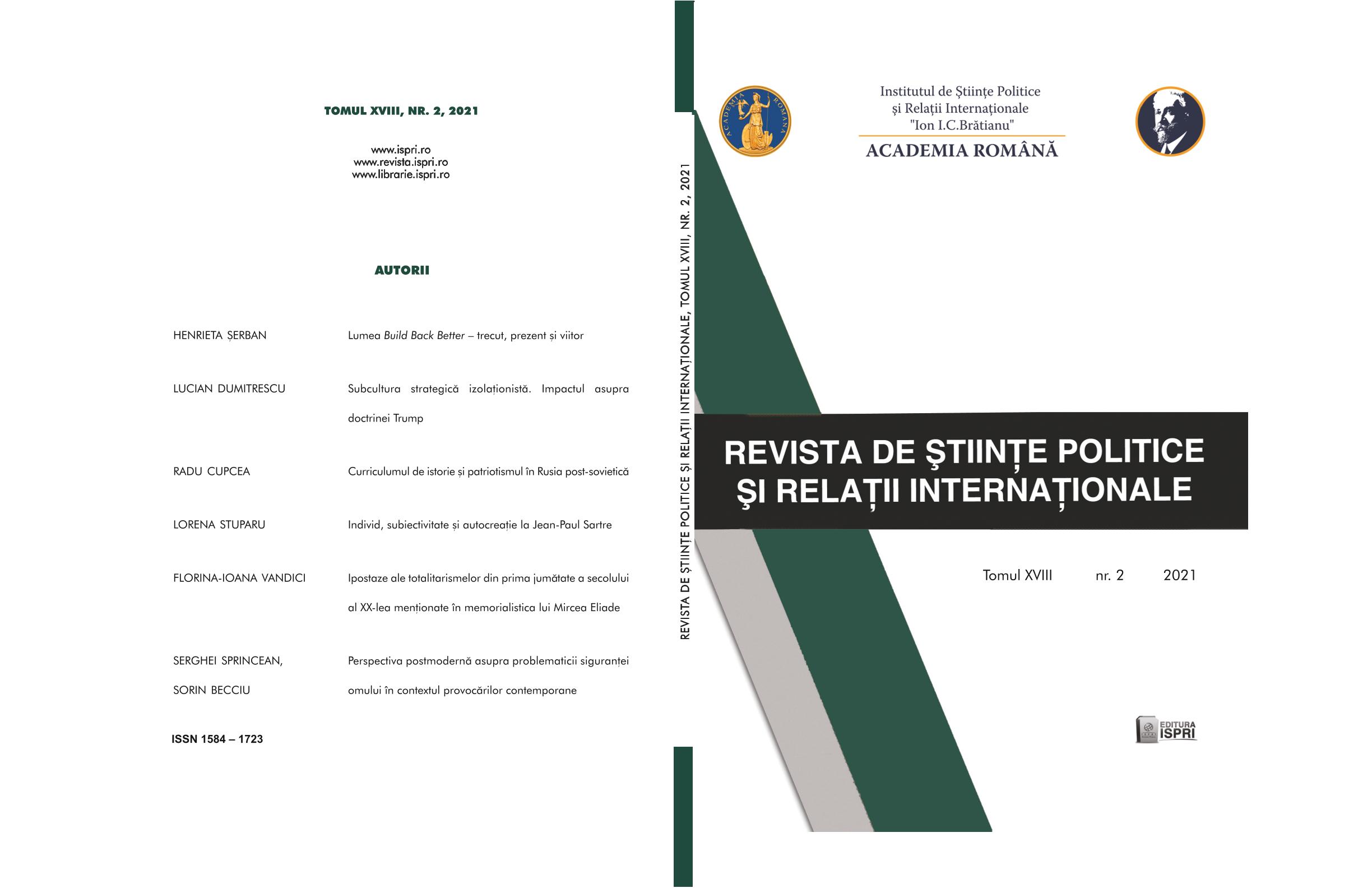IPOSTAZE ALE TOTALITARISMELOR DIN PRIMA JUMĂTATE A SECOLULUI AL XX-LEA MENŢIONATE ÎN MEMORIALISTICA LUI MIRCEA ELIADE
Hypostases of Totalitarianisms from the First Half of the Twentieth Century Mentioned in Mircea Eliade's Memoirs
Author(s): Florina Ioana Mititean VandiciSubject(s): Political Philosophy
Published by: EDITURA INSTITUTULUI DE ȘTIINȚE POLITICE ȘI RELAȚII INTERNAȚIONALE ”Ion I. C. Brătianu”
Keywords: memorial work; totalitarianism; legionarism; history; ideologies; autobiography; (re)read;
Summary/Abstract: Mircea Eliade’s memorial volumes are the landmark on the hypostasis of the totalitarianism in the 40’s (the legionary movement in particular), noted mostly by Mircea Eliade during the period when he worked as a representative of the Romanian Legation in Lisbon (1941-1945), a stage that followed the one as a Cultural Attache of the Romanian Embassy in London (1940-1941).An essential transmutation regarding the relation between the avatars of the memory and the historic background was at stake, with everything that involves the consideration of the aseptic role the self-imposed forgiveness as a form of protection performs from the „moral“ point of view in the representation of the past, Mircea Eliade’s memoires and the uncensored notes during the Portuguese period (1941-1945) can reveal, following developing, some obvious shadows in the light of the aporetic coordinates in Paul Ricœur’s Memory, History, Forgiveness. The theme of the representation of the past, mainly, the hypostasis of the totalitarianism in Mircea Eliade’s memorial pages are decoded in the formula suggested by Paul Paul Ricœur, as a „(present) representation of an absent thing“. The route built following the Husserl’ perspective preferred by Ricœur, follows the coordinates of the route from memory to the reflected memory, passing through reminiscence (or recalling)” . The events that occurred during the troubled period between 1945-1950, as they have been noted in the diary, memoires and letters, with no safety interventions, remake the picture of a completely divided Europe between its gaps (Hitlerist, Stalinist, fascist, legionary etc.) being trapped altogether intellectuals, politicians and ordinary people, a humanity marked by its condition as a victim of the terror of the history and of the „barbary with a human face“. Octavian Vuia confesses to him that Heidegger, his former professor, when he was expected to be „purged as a Hitlerist“, showed him „the pile of manuscripts“, telling him that in case the Germans will insult him that way, as a protest, he would burn his „entire unique work“ that, just as Eliade mentions, is also „the most interesting one...“ In ,,Hypostasis of the totalitarianisms in the first half of the XXth century mentioned in Mircea Eliade’s memorial work’’, we have made an attempt to test our ability to (re)read and (de)classify the „hidden treasure“ of the totalitarianism by highlighting their unilaterality of the interference between doctrines and their extreme forms of manifestation as derivatives of the totalitarianism.
Journal: Revista de Științe Politice și Relații Internaționale
- Issue Year: XVIII/2021
- Issue No: 2
- Page Range: 71-90
- Page Count: 20
- Language: Romanian

